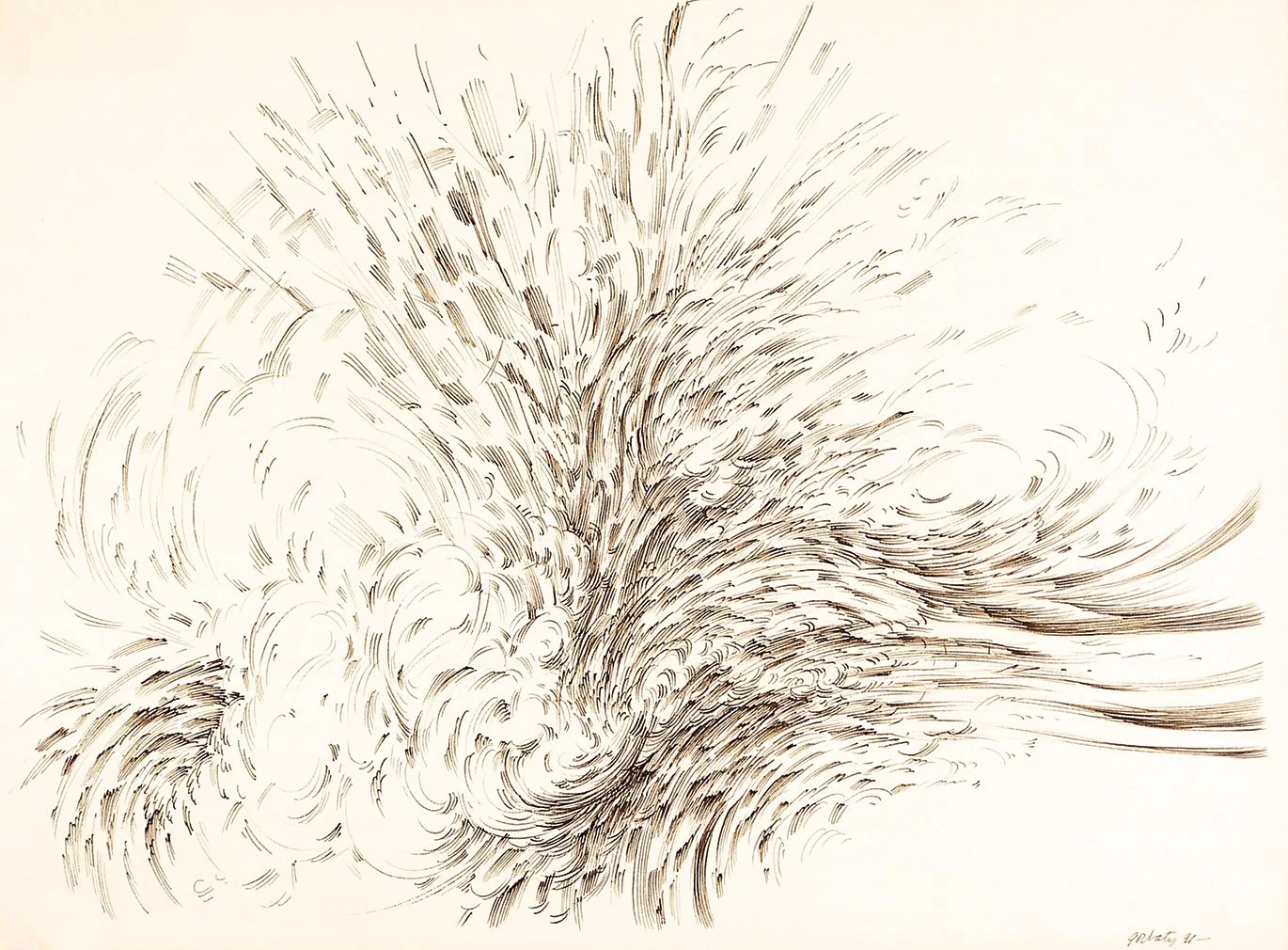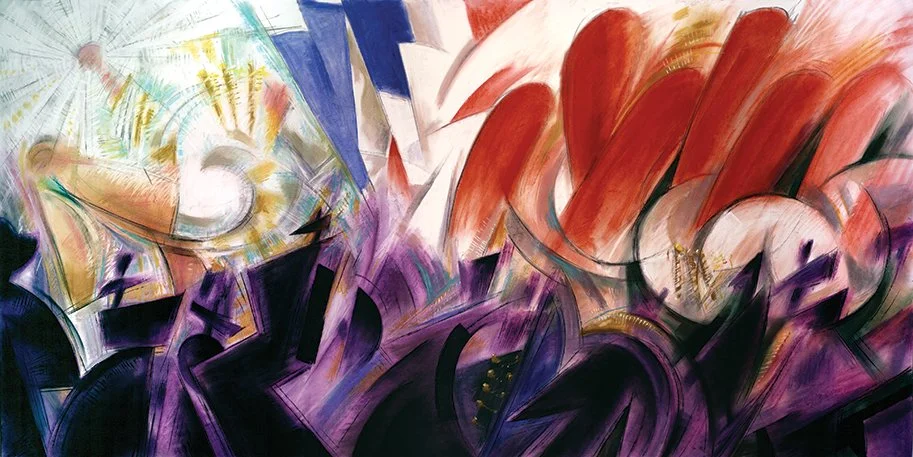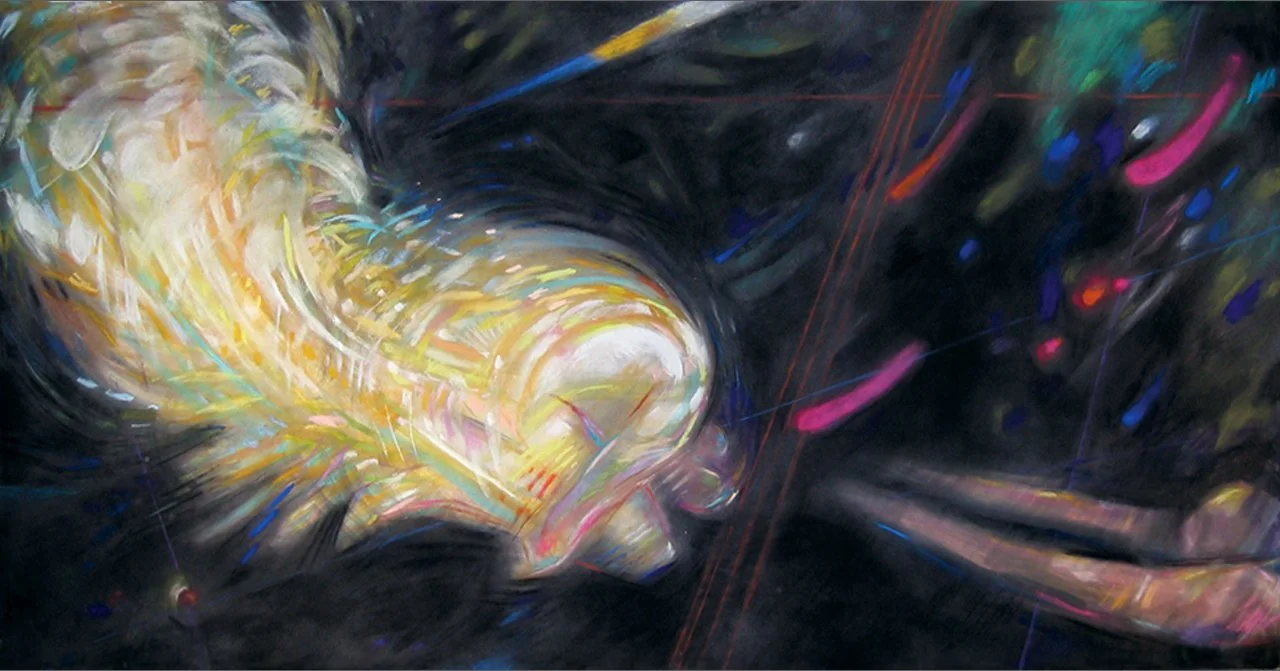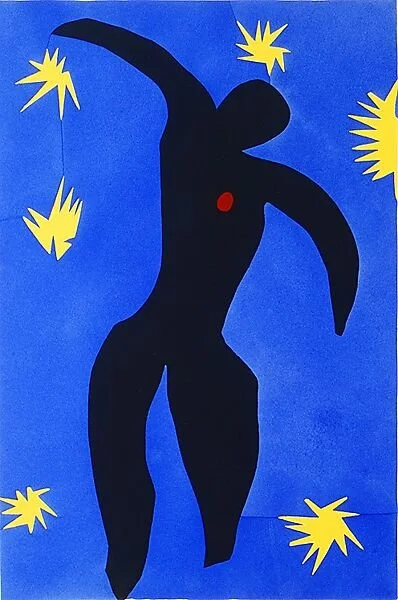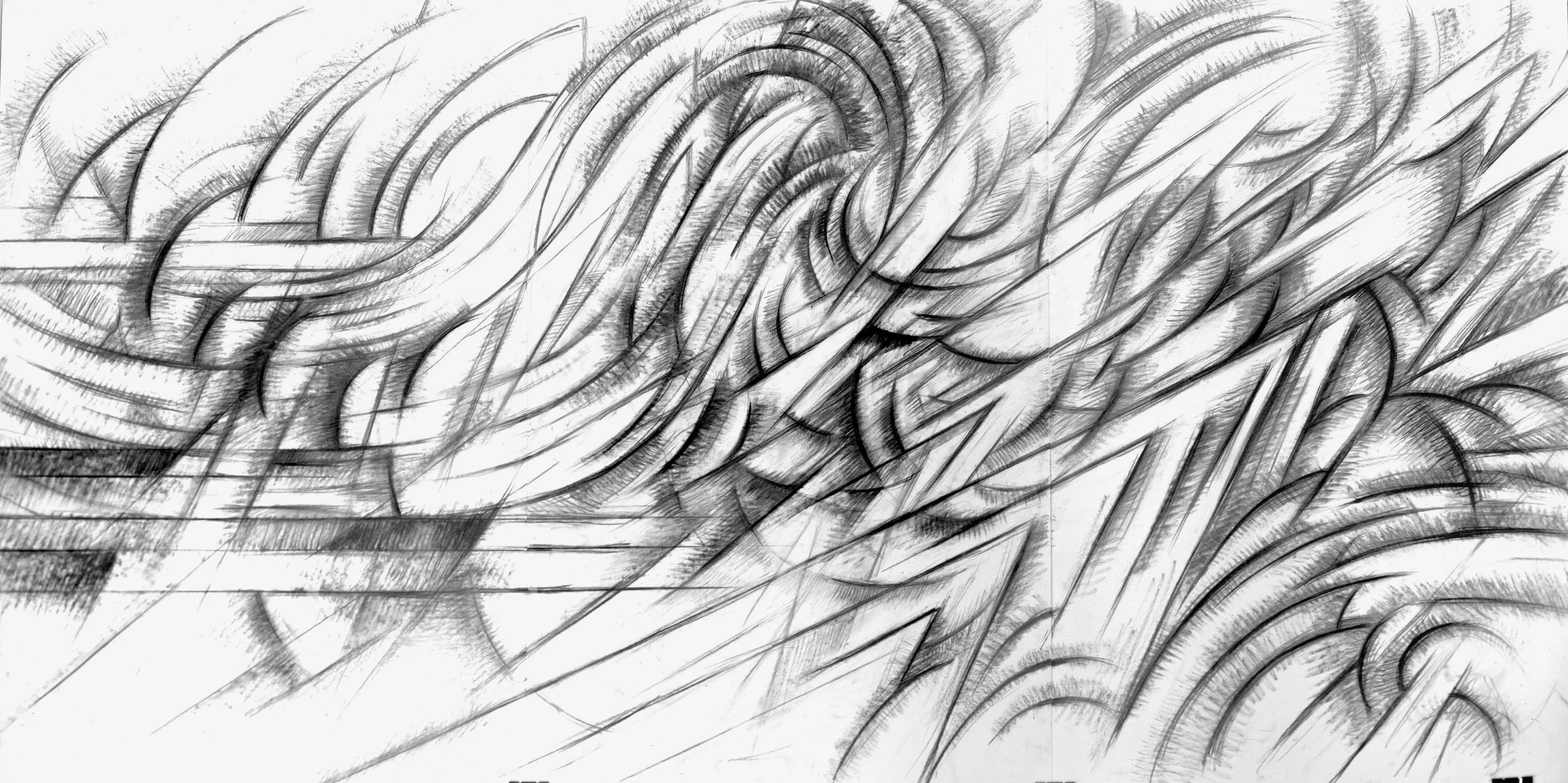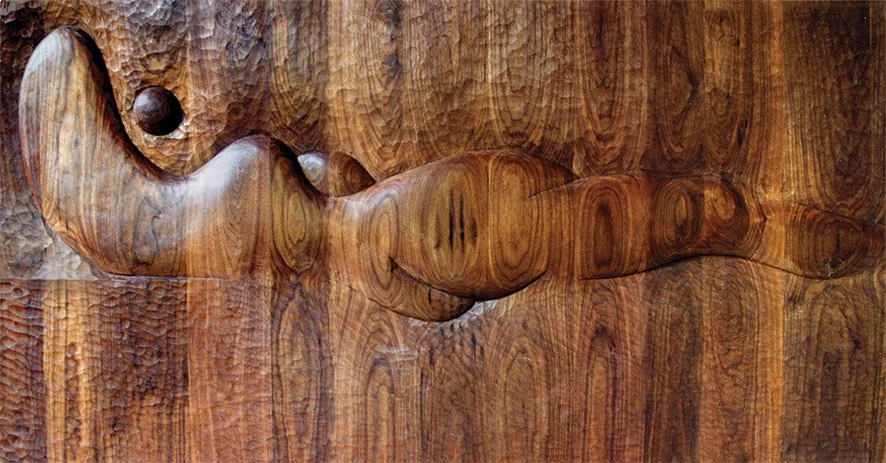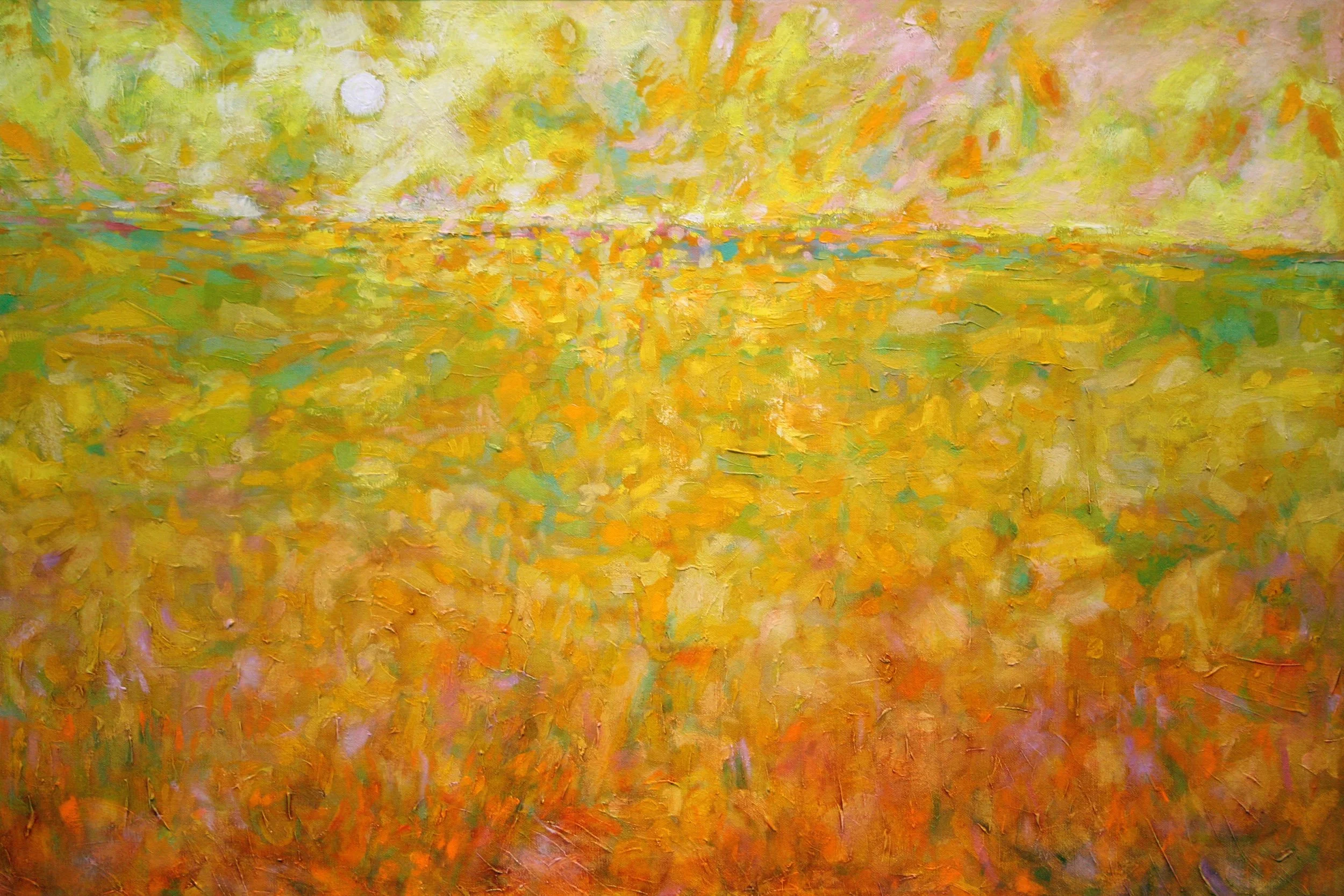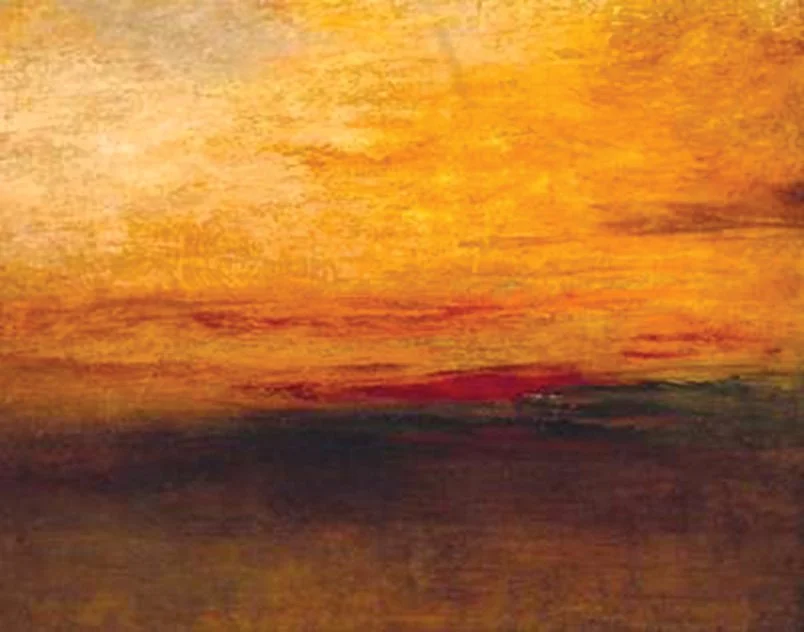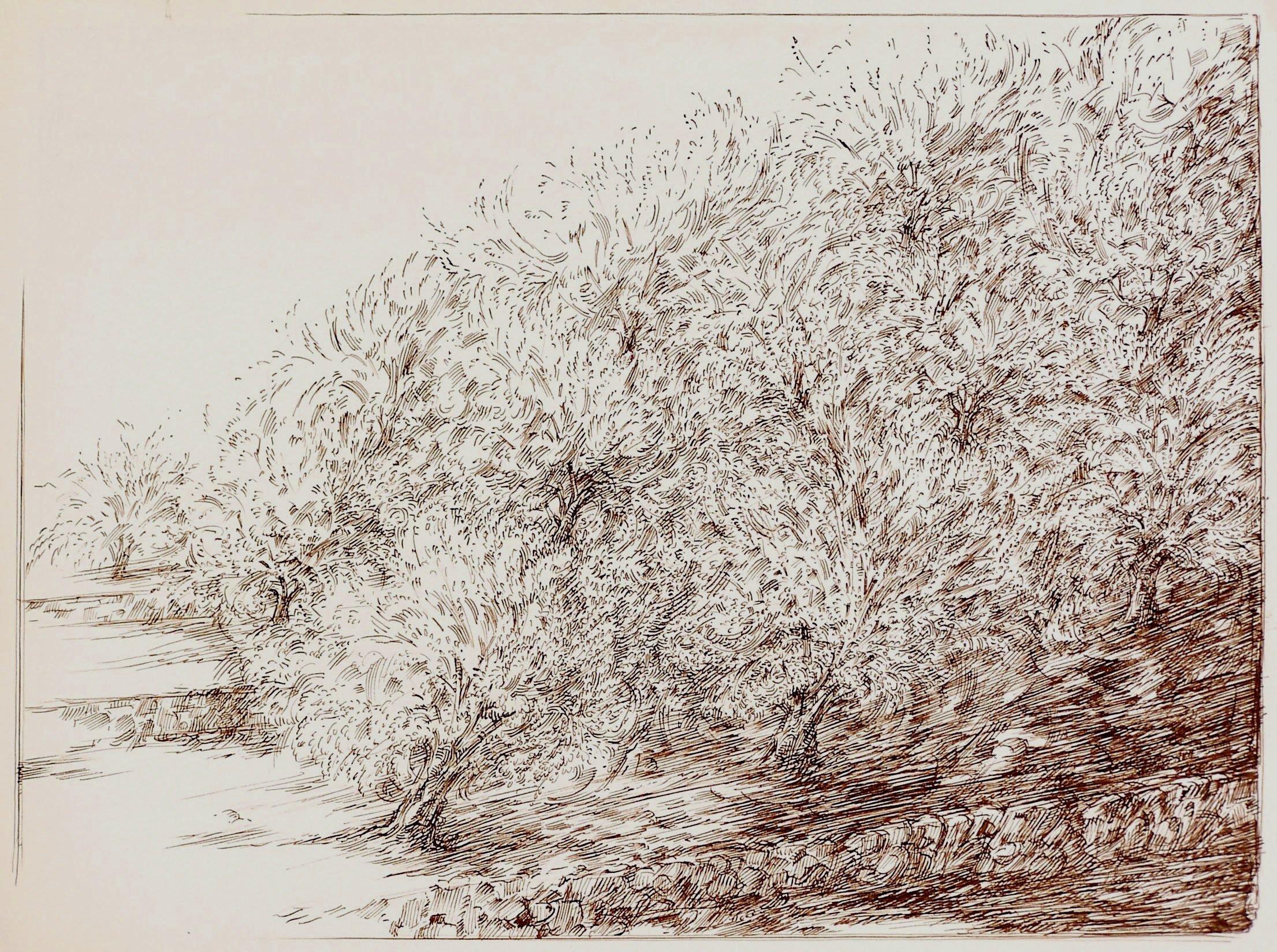
coming to know
the artist
Charles D. Noyes
On a gray, damp February afternoon in 2008 I sat in my deserted office and opened an innocuous padded mailing envelope. Inside were three carefully packaged books featuring the various art works of Norman Gorbaty. Artists are continually soliciting the Tremaine Gallery for possible exhibition; I cracked the first volume in exercise of my due diligence as one of the gallery’s directors. I’d never heard of Norman Gorbaty, but the images that confronted me as I flipped through the pages thrilled me at once.
There were sweeping pen and ink drawings in warm, rich sepia tones that captured the energy and pulse of Da Vinci’s explosive tempest studies, followed by quieter, spare compositions of distant cityscapes and delicately wooded copses. Other volumes revealed riotous pastel drawings of throbbing parade phalanxes and helter-skelter circus scenes, voluptuous figure work in both luminous color and carved walnut, and energetically painted canvases of rippling light, color and texture. I saw influences of Cezanne’s late figurative work, Marc’s fragmentation and coloration, and Matisse’s soulful brevity and wit. I saw a remarkable breadth of subject matter, media and technique, all guided by a masterful, sensitive hand and a brilliant eye. Who was this Norman Gorbaty, and why had I never before seen his work or read his name?
I perused all three books quickly and carefully, and then immediately phoned the number on the cover letter. Ben Gorbaty, the artist’s son and the gentleman responsible for organizing and promoting his father’s vast oeuvre, answered the phone after three rings. And I’m afraid that I gushed for the next five minutes. Where has all of this incredible work been all these years? When might we schedule a show here at the Tremaine Gallery? When would I be able to meet with the artist? Indeed, I was inspired by the volume, variety and quality of Norman Gorbaty’s work, but I was also intrigued by the history behind it all. It almost reads like the plot line of a serial novel: A brilliant young art student, lauded by many as the next best talent to rock the art establishment, opts to sidestep his fine art career for a more stable and secure livelihood in commercial graphics. He steadily climbs the ladder of success, a shining star in a competitive industry full of stars, and eventually opens his own thriving design studio. He is known to everyone as the innovative and successful ad man and graphics designer—credits for major motion pictures, museum posters, magazine covers and book illustrations. But all the while he is leading another life. Still passionately devoted to his drawing, painting and carving, year after year he toils away in his private world of wood shavings, oil pigments and pastel dust. Evenings and weekends find him sequestered in his studio quietly pursuing his first love, creating images and objects of tremendous beauty and intensity. Only after fifty years does this remarkable artist, now in the twilight of his ad career, step out into the light with his paintings, drawings and sculpture to meet the scrutiny of the public eye. This scenario may sound like a work of fiction, but it’s all true. Save for family, close friends and the artist himself, no one has seen a comprehensive display of Gorbaty’s art since he participated in an exhibition of young American printmakers at MoMA in 1954. Throughout his fifty years as a thoroughly vested and successful graphic artist, Gorbaty has never stopped producing his fine art—a staggering body of work including prints, drawings, pastels, paintings, relief carvings and sculpture.
So there I found myself, in the winter of 2008, attempting to plan the first comprehensive exhibition of Norman Gorbaty’s fine art in over five decades. I’d been broadsided by a body of work I’d never seen before, and I was tremendously excited about the prospects of a stunning show with an essentially unknown master artist. We set tentative dates for an opening in late October of that same year and arranged for a meeting in early summer to meet with Norman, finalize the scope of the show and select a range of works. My biggest challenge would be winnowing down my selections to create a cohesive and compelling inaugural showing at Tremaine.
I soon realized that the images in the survey books I’d studied barely tipped the scales. I studied hundreds of digital images and additional images in print, and I read the artist’s own musings on his approach to making art. The well was rich and deep. Norman Gorbaty’s work both dazzles in its unfettered expression and amazes in its remarkable breadth. Many of his charcoal and pastel images embrace the kinetic dynamism and emotive power of the Italian Futurists, while his spare still life images and landscape drawings in pen and ink hint of Rembrandt’s gentle hand and eye for nuance. Figurative relief carvings in polished walnut nod to both the sensuousness of Constantin Brancusi and the reductive essence of Henry Moore.11,12 Visions of J.M.W. Turner rumble to the surface in some of his more robust canvases. His diverse print works combine both the whimsy of Picasso and a graphic designer’s love for daring form and space relationships. In all subjects and media, however, Gorbaty builds on a solid foundation of drawing and honors the expressive soul of the line. He understands and thoughtfully exploits the volumes a single responsive stroke can speak. Drawing is at the core of it all. States the artist, “When I refer to ‘drawing’ I don’t just mean the physical works on paper or the finished piece. I am also referring to the process I use in the actual ‘doing’ of the art. I make a mark. That mark tells me where the next mark should go and so on until the piece begins to have a life of its own. It begins to tell me what it wants to be. It is for me to recognize what it wants to be and help it to become that.” It is this devotion to drawing and responsive process that resonates most profoundly.
When I first met Norman Gorbaty he struck me as an interesting mix of opposites. He was open and direct, wry and witty in conversation, and almost nonchalant regarding the incredible breadth and quality of his art. Our initial exchanges parried back and forth, bobbing and weaving with sarcasm and good humor, seldom dipping deeper. But once we began looking at work and discussing process and technique in his studio, that surface energy fell away and the voice of the artist emerged. Someone who sees with such sensitivity and precision, someone who has the sensibility and confidence to reduce riotous patterns of shadow and form into several representative stokes of line and color, draws from a place of thoughtful calm and centeredness. This was the voice that surfaced as we lingered over pen and ink drawings, stacks of charcoal studies and countless pastels and paintings. I would ask about a particular technique or influence. Norman would pause, and then answer almost cryptically. He would not readily betray his muse or reveal the intimacies of his process. But I could tell that he enjoyed discussing his work on this level—bypassing the surface trappings and teasing a bit at the soul of each piece.
A cursory glance around Gorbaty’s studio reveals myriad passions and pursuits. Tall windows punctuate almost every wall, and even light floods in from the suburban forest that surrounds the space. An overflowing table of bulbous pastels commands the north side of the studio. On top, all around and underneath are plaster casts of horses in rakish poses, carved stele figures tilting precariously and covered with colorful dust, and several wild versions of a bull, reminiscent of Picasso’s virile beast, sculpted in plaster, bronze and wood. Additional tables and flat files harbor stacks of drawings and studies. Painted canvases and panels in bunches of four and five are clustered along the walls and among the table legs. The sheer volume, quality and variety of the work defies the notion that one man, one hand, is behind it all.
A double easel supporting an oversized drawing board anchors the room. On it is clipped Norman’s most recent pastel image of a guitar16—fragmented and shuddering in a profusion of electrified contrast. Concentric waves of line and tone radiate in all directions, dissolving, overlapping and recombining. The riotous image feels like what a guitar is and what it sounds like. In striking juxtaposition, the actual guitar, worn and passive, rests benignly in the corner. “I don’t understand music,” he claims. “I just know I love it.” He will pursue this series of musical instruments until he feels that he’s said what he wanted to say. Until it feels resolved and his inclinations are wrung out. Then he will switch his focus to another series already in progress—writhing figures in sequence, a garden view, or simply the desiccated stems of a picked-over grape cluster. Gorbaty often works in series, kneading, massaging and squeezing meaning and vitality out of an unpresuming object or a scene that most of us would not give a second glance. Viewed in sequence, the images reveal an energetic and methodical reduction of detail and form. However complex or intricate the original subject matter, Gorbaty’s process typically careens toward a provocative distillation of line, shape and color. Once he has drawn through the various layers of meaning and interpretation, once he has uncovered and celebrated the essence or harmony that first drew his attention, he will pick up and move on.
I find these series most engaging because they offer a small glimpse into the mind of the artist. Studying the images in procession, one can compare the aspects of form and reality that the artist has sacrificed, the elements and ideas that have been exaggerated and celebrated. One is able to form a deeper understanding of and appreciation for the artist’s vision and sensibility. For Gorbaty, the thrill and satisfaction are in this pursuit and process of refinement. The material results, while captivating for the viewer, are really quite secondary for the artist. When talking about a particular painting series, the artist paused and stated that he would be content to paint over the same canvas again and again, appreciating each state, but always pushing on to another responsive layer of color and form—one version, one set of decisions, forever informing the next.
Coming to know Norman Gorbaty and orchestrate an exhibition of his fine art has been a revelation. I am delighted to have been involved in the efforts to bring his work to a broader audience, and I hope that the Tremaine Gallery exhibition will be but the first of many opportunities for the public to revel in Norman Gorbaty’s vision. I also wish to recognize the incredible work and dedication of Ben Gorbaty and Shelley Kaiser-Gorbaty. All organization, cataloguing and exhibition preparation are the result of their herculean efforts, passion and devotion. I remain exhilarated and grateful.
Charles D. Noyes curated the inaugural exhibition of Norman Gorbaty: Works of a Modern Master held at The Tremaine Gallery at The Hotchkiss School, October 25th through December 17th, 2008. He has been teaching drawing, painting and printmaking at Hotchkiss since 1986, where he also serves as Art Department Head and co-director of The Tremaine Gallery. Noyes earned his Masters of Art Education at Rhode Island School of Design. He is an avid outdoorsman and has traveled extensively throughout the world.
Wave No. 2
Tempest Study
Leonardo Da Vinci
Parade
Flyer And Catcher
Seaside Girls No. 1
Trees on Trees
Blue Horse
Franz Marc
Icarus
Henri Matisse
Move
Velocità d'automobile
Giacomo Balla
Italian Futurist
Reclining Nude No. 2
Reclining Figure
Henry Moore
Sun Day
Sun Set
JMW Turner

